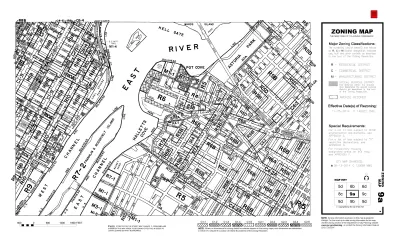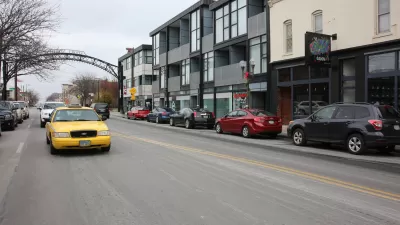A new database measures the restrictiveness of exclusionary zoning practices around the country. Exclusionary zoning, it turns out, is much more prevalent than commonly acknowledged.

The Eviction Lab has created a new tool to document exclusionary zoning practices around the United States as a first step creating the new housing necessary to ease rising housing costs in communities.
Writing for the Eviction Lab, Matt Mleczko and Matthew Desmond introduce the challenge of reforming zoning when so little is known about zoning in the aggregate.
“Zoning is fundamental to the make-up of our communities and our neighborhoods, but understanding these regulations and how they vary within and between places is enormously challenging. In large part, that’s because we lack straightforward, nationwide data,” according to the article.
Mleczko, Desmond, and the team at the Eviction Lab are attempting to fill that void with the launch of the National Zoning and Land Use Database (NZLUD). The duo have also authored an article for the Urban Studies journal to describe the process of creating the NZLUD, and have shared their data and code on GitHub.
The process created a metric the team dubbed the Zoning Restrictiveness Index (ZRI) to compare the restrictiveness of development regulations across jurisdictions. “We find highly-restrictive zoning policies in some of the coastal metro areas you might expect—Washington DC, New York, Seattle—but also in rustbelt metro areas like Milwaukee and Detroit,” write Mleczko and Desmond. “This underscores that exclusionary zoning is more common than many have acknowledged, both across and within metro areas.”
As measured by the ZRI, the most restrictive metropolitan areas are 1) Washington-Arlington-Alexandria, DC-VA-MD-WV; 2) New York-Northern New Jersey-Long Island, NY-NJ-PA; 3) Providence-New Bedford-Fall River, RI-MA; 4) Seattle-Tacoma-Bellevue, WA; and 5) Tampa-St. Petersburg-Clearwater, FL.
The remainder of the top ten, which, perhaps shockingly, does not include any Californian metropolitan areas, can be found at the link below. Example maps of depicting ZRI quintiles for the San-Francisco-Oakland-Fremont metropolitan statistical area (MSA) and the Houston-Sugar Land-Baytown MSA are also included.
FULL STORY: To reform exclusionary zoning, we first need to document it. Now we have a tool for that.

Alabama: Trump Terminates Settlements for Black Communities Harmed By Raw Sewage
Trump deemed the landmark civil rights agreement “illegal DEI and environmental justice policy.”

Planetizen Federal Action Tracker
A weekly monitor of how Trump’s orders and actions are impacting planners and planning in America.

Why Should We Subsidize Public Transportation?
Many public transit agencies face financial stress due to rising costs, declining fare revenue, and declining subsidies. Transit advocates must provide a strong business case for increasing public transit funding.

Understanding Road Diets
An explainer from Momentum highlights the advantages of reducing vehicle lanes in favor of more bike, transit, and pedestrian infrastructure.

New California Law Regulates Warehouse Pollution
A new law tightens building and emissions regulations for large distribution warehouses to mitigate air pollution and traffic in surrounding communities.

Phoenix Announces Opening Date for Light Rail Extension
The South Central extension will connect South Phoenix to downtown and other major hubs starting on June 7.
Urban Design for Planners 1: Software Tools
This six-course series explores essential urban design concepts using open source software and equips planners with the tools they need to participate fully in the urban design process.
Planning for Universal Design
Learn the tools for implementing Universal Design in planning regulations.
Caltrans
Smith Gee Studio
Institute for Housing and Urban Development Studies (IHS)
City of Grandview
Harvard GSD Executive Education
Toledo-Lucas County Plan Commissions
Salt Lake City
NYU Wagner Graduate School of Public Service





























